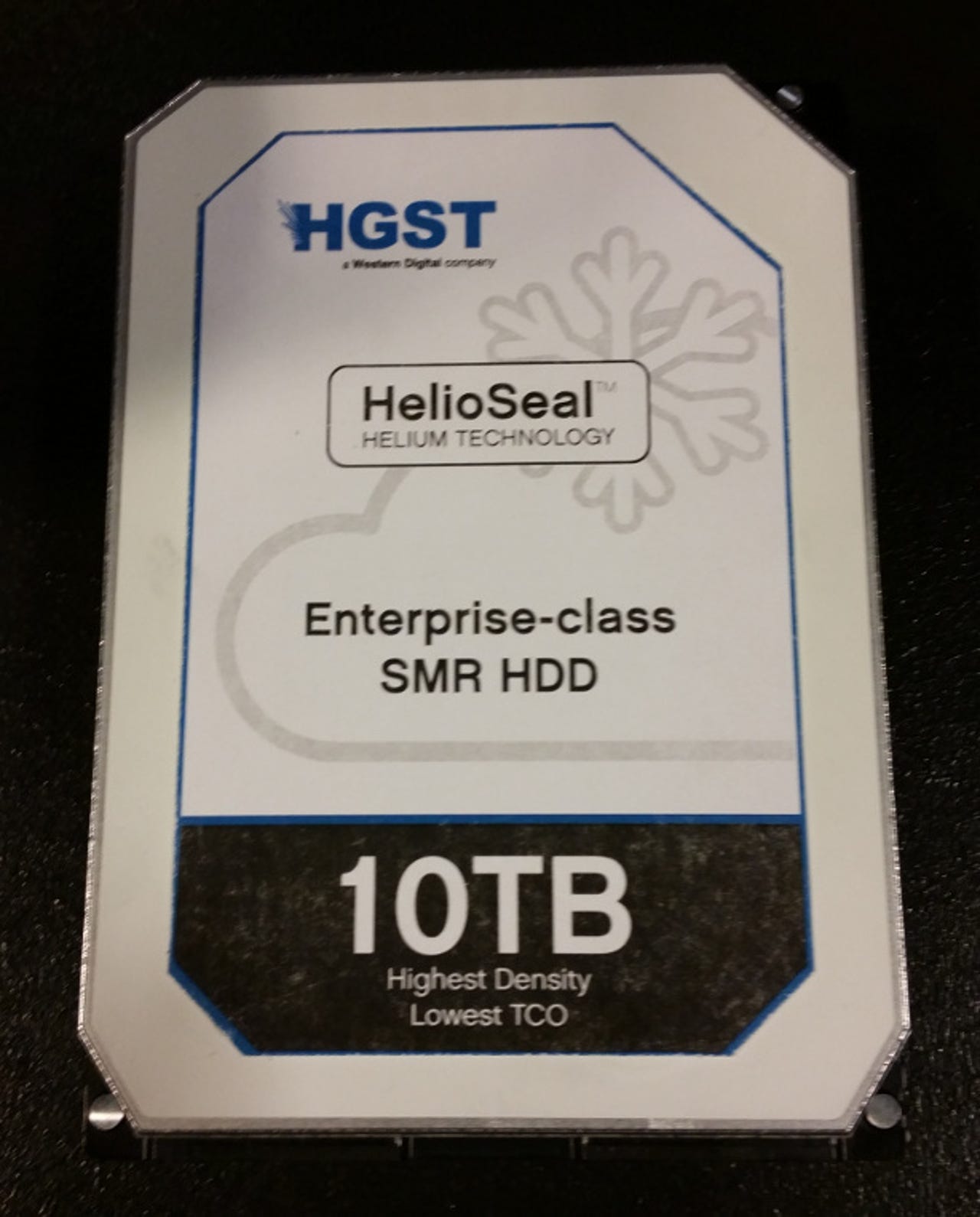10-terabyte hard drive coming soon to a server near you

At the Linux Foundation Vault tradeshow in Boston, for Linux and open-source storage developers, the several hundred attendees got a glimpse of the future with a peek at HGST's 10TB hard disk drives (HDD).

This drive, better known as the 10TB SMR HelioSeal HDD, has been in the works since September 2014. At the show, sources close to the company said it would be shipping in the second quarter of 2015. To access these drives from Linux, a new device manipulation library had to be added: libzbc.
With this library, Linux can access Zoned Block Commands (ZBC)-based and Zoned-device ATA command set (ZAC) HDDs, such as the 10TB HelioSeal. The ZBC standard details how to handle devices that require writing to occur at specific locations on their media while allowing random reading of already written data.
Support for ZBC devices was introduced in Linux kernel 3.17. For using them in ZAC mode, support was added in the Linux 3.19 development tree. In short, full support for these new drives is still a work in progress.
That's because the 10TB HelioSeal uses two new complementary technologies: HelioSeal technology and host-managed Shingled Magnetic Recording (SMR).
The first just means, like the name says, that the disks are sealed and filled with helium gas. While that helps reduce the read/write head friction and enables HGST to pack more platters in, it doesn't matter to Linux SMR.
Tech Pro Research
In SMR, relatively wide data tracks are written that partially overlap the previous ones. These successively written data tracks overlap in a way that reminds me of roof shingles. In addition, old-style disk drives tracks are separated by a small gap to make sure adjacent writes don't corrupt data. In SMR drives, this gap is removed, thus enabling 25 percent to 100 percent more data on the same basic disk platter. Eventually, SMR is expected to enable data densities as high as 3 trillion bits per square inch.
This works because the write heads lay down a wider track than the read heads require. So, the read heads "read" the data on the narrow tracks within the broader "bands" written by the write heads.
In this drive, HGST is using 256MB bands. This means that when data is updated, the entire 256MB band must be read, modified, and rewritten. If the band has space available, the data is added to it. If it doesn't, it's placed on another band.
All of this is tricky stuff, which is why HGST has been taking its time in rolling out these drives, and developers have been sweating the details of implementing support for them. Still, the drives should be here soon.
Pricing has not been set. HGST representatives said that the drives' total cost of ownership (TCO), when you take into consideration its lower power, cooling bills, and remarkable storage density, will be reasonable. We'll soon know if HGST is right.
Related stories: